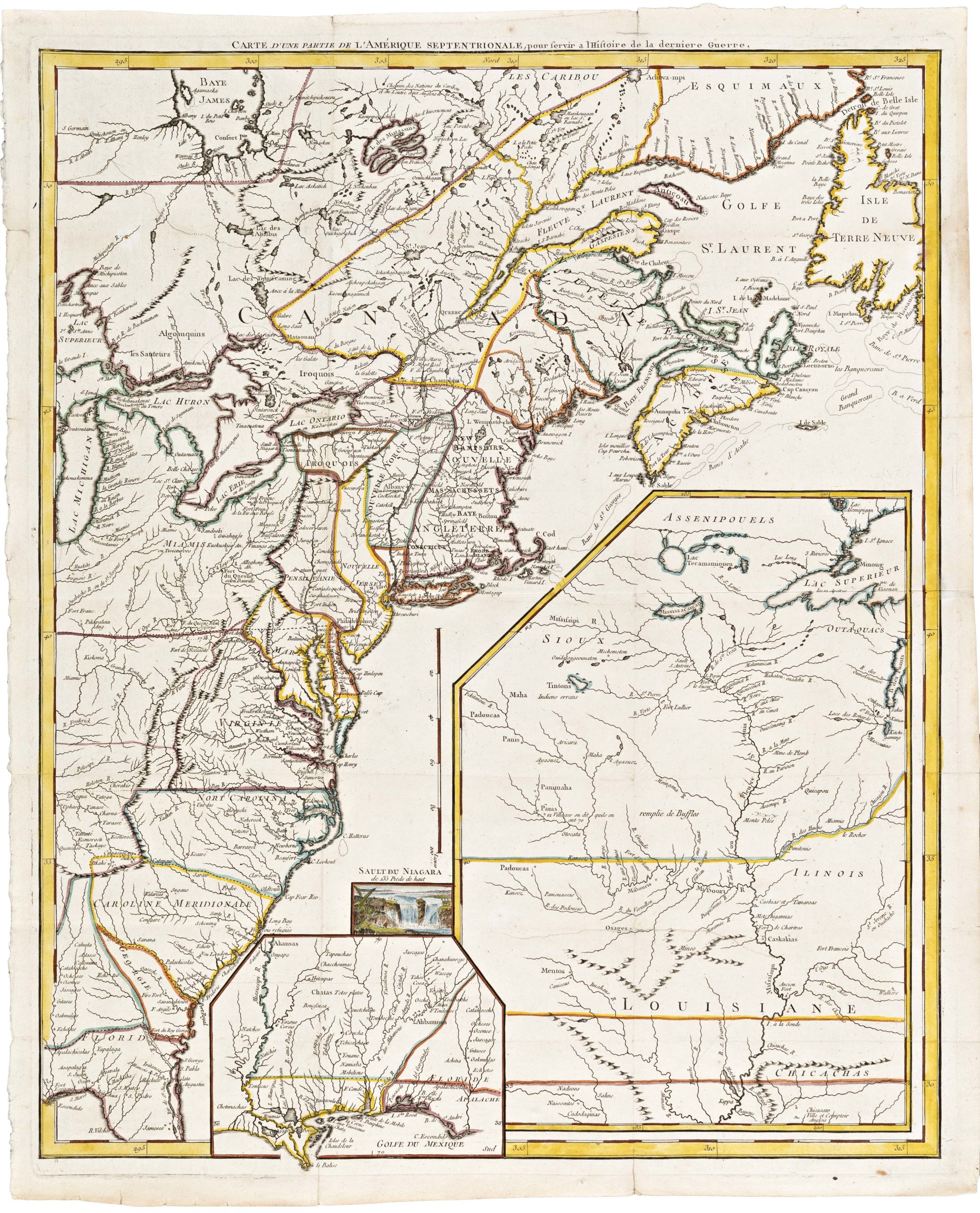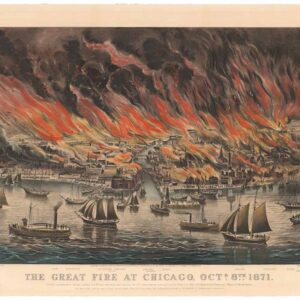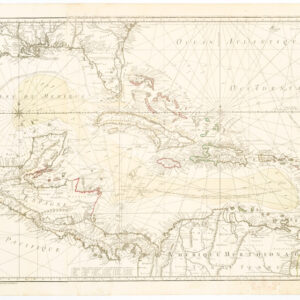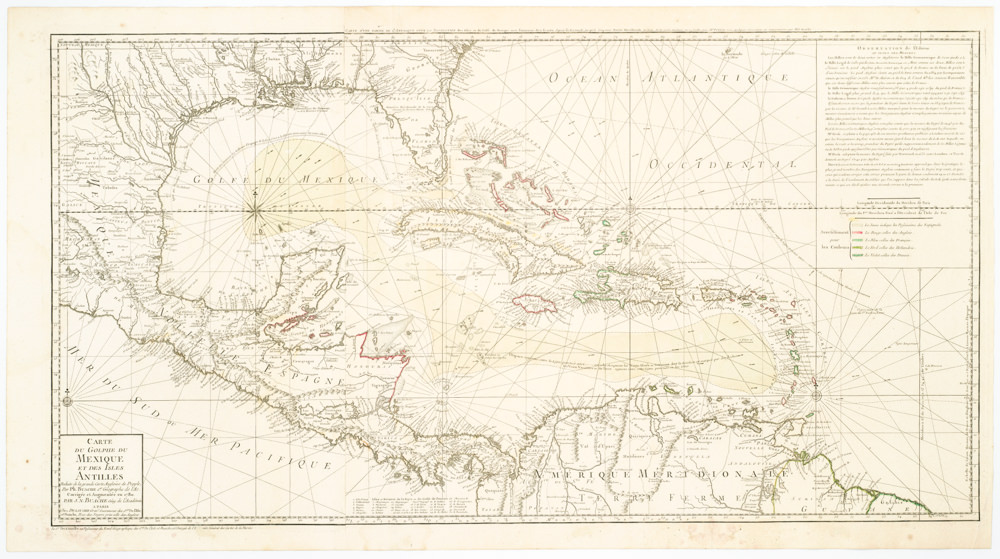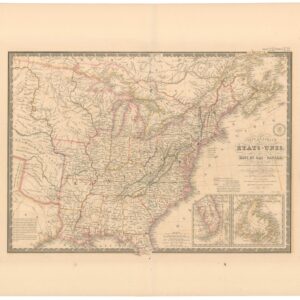A beautiful example of Speed’s notable mapping of the interior of Carolina.
A New Description of Carolina.
$4,000
1 in stock
Description
A fine example of John Speed’s 1676 map of the English Province of Carolina, taking in the Atlantic coast from Virginia to Florida. In addition to the well-mapped coastline, it represents an early attempt to depict the interior of the colony.
The map is oriented towards the west, with north at right. In addition to European settlements along the coast (including the “lost colony” of Roanoke), it notes Native American villages in considerable detail. Rivers, mountains, forests, and other features are noted throughout the interior. The verso includes text on the history, geography, climate, and other characteristics of Carolina and Florida.
Speed relied on John Ogilby’s similarly titled “A New Description of Carolina, by Order of the Lords Proprietors” (commonly known as the “Lords Proprietors’ Map”), published only two years prior. Ogilby’s map, in turn, was based on descriptions of the interior by German-born explorer John Lederer, descriptions which in some cases turned out to be apocryphal, highly exaggerated, or at least based on misunderstandings, the explanation for “Deserta Arenosa,” “Ashley Lake,” and a savannah just below the Blue Ridge Mountains seen here. Lederer’s travels are noted with a path from ‘the Falls’ (of the James River) at right, traveling southwesterly towards Ashley Lake and then returning by a route further to the east.
This map was engraved by Francis Lamb and appeared in John Speed’s A Prospect of the Most Famous Parts of the World, published in 1676, a supplement to his earlier work The Theatre of the Empire of Great Britain. It is independently cataloged by roughly fifteen institutions in the OCLC.
Cartographer(s):
John Speed (1552-1629) was a prominent English mapmaker and historian operating in the late 16th and early 17th centuries. Born in Farndon, Cheshire, Speed’s interest in maps and geography led him to establish himself as a successful mapmaker and publisher in London. He gained widespread recognition for his detailed and beautifully illustrated maps of various regions, earning him the sobriquet “the leading London cartographer” of the Baroque period.
One of Speed’s most notable works is The Theatre of the Empire of Great Britaine, published in 1611. This ambitious atlas consisted of detailed maps of counties and cities across England, Wales, Scotland, and Ireland, accompanied by historical descriptions and genealogical tables. The atlas was not only a cartographic achievement but also a significant historical record of the British Isles during that era. Speed’s maps were praised for their accuracy and artistic flair, often featuring decorative elements and engravings of notable landmarks and figures. When it came to Britain’s colonial aspirations, Speed was instrumental in visualizing the empire cartographically.
Both during his life and after it, John Speed’s maps enjoyed widespread popularity and were sought after by nobility and scholars alike. Speed reached the ripe age of 77, and his maps were re-published for more than a century after his death. His legacy as a key figure in the development of English cartography endures to this day.
Condition Description
Minor repairs to chipping along the edges. Later, period correct color.
References

